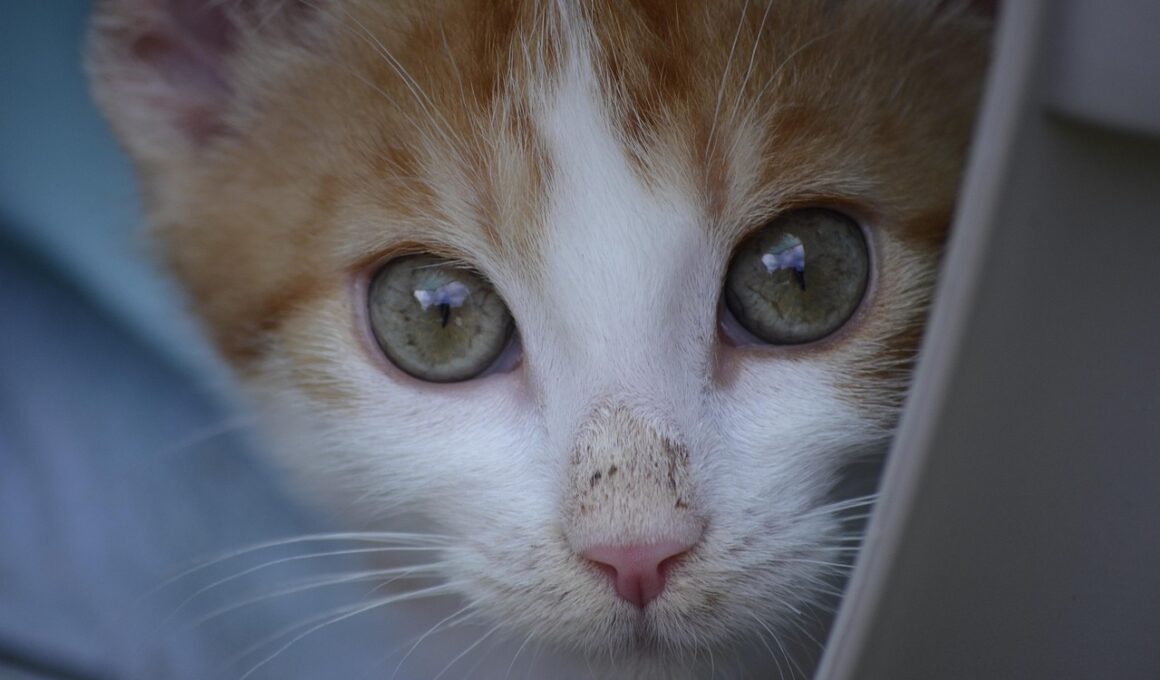What It Takes to Be a Cat Rescuer: Personal Accounts and Advice
Becoming a cat rescuer is not just about having a love for cats; it requires a deep commitment to their welfare and understanding their unique behaviors. Cat rescuers spend countless hours assessing the needs of cats in distress, ensuring they are healthy, safe, and comfortable. The job often includes rescuing strays, these are cats without homes, abandoned or lost. Rescuers are often faced with difficult scenarios, from cats needing medical attention to feral cats resistant to human interaction. Each rescuer develops their strategies to provide care, including the use of traps and safe shelters, which can lead to transformative outcomes for these felines. The emotional rewards of this work are immense; seeing a cat find its forever home after rehabilitation is incredibly fulfilling. Networking with local animal shelters, as well as other rescuers, enhances effectiveness in terms of matching each cat’s needs with suitable homes. These volunteers create community awareness of adoption. Potential rescuers should also consider how financial implications play into running a rescue and ensure they have the resources to sustain their efforts long-term.
Many cat rescuers begin their journey by volunteering with local shelters. Often this can lead to personal accounts of tragedies, resilience, and hope, characterizing their individual journeys. That includes countless incidents of rescuing stray cats and helping them recover from neglect, malnutrition, or injuries. Each story has its unique struggles, shaped largely by circumstances surrounding each cat. Rescuers recount moments of heartbreak when a cat is beyond saving or has to be euthanized due to insurmountable health challenges. However, it’s also peppered with triumphant tales of feral cats growing into loving pets. Cat rescuers learn not only about feline care but also about compassion, patience, and the need for community support. Many rescuer groups often establish organizational structures that provide a framework for effective operations. Several success stories emerged from organizations pooling resources to create a support network connecting adopters, volunteers, and shelters. Background knowledge about health and behavior of different cat species becomes essential. For example, understanding socialization for kittens versus mature cats differs significantly, providing them with the right environment during recovery to prepare for their new homes.
Building Support Networks
To succeed in cat rescue, forming alliances within the community is crucial. Networking helps raise awareness about the importance of adopting cats, reducing the overwhelming number of felines in shelters. Rescuers often participate in local events, including fairs, vaccination clinics, and educational outreach programs to encourage responsible cat ownership. By collaborating with veterinarians, rescues can also gain access to discounted services that benefit both the cats and their adopters. Hosting fundraisers and adopting drives can extend outreach further to garner community involvement. Social media plays a significant role in increasing visibility as well, allowing rescues to share stories, tips, and available cats needing homes. This digital presence often drives the adoption process, showcasing their success stories. Collaborating with local businesses, like pet stores, helps further solidify the message of cat welfare and encourage adopting over purchasing. Furthermore, maintaining an updated website with adoption information is essential for helping potential adopters understand the process, available cats, and supporting resources. Cat rescues inherently build a community-oriented approach that fosters unity among similar goals, showcasing a collaborative effort toward feline wellness.
Resilience serves as the backbone for cat rescuers; they often encounter emotional challenges. The daily struggles of rescued cats can be tough to face, particularly in cases of dealing with socialized cats or those needing behavioral modifications after traumatic experiences. It’s vital for rescuers to take care of their mental well-being, as they are often the support system for felines undergoing serious transitions. Developing coping strategies such as seeking support from fellow rescuers can help alleviate emotional burdens. Sharing experiences among peers fosters healing and understanding. Many find writing down their journeys or advocating for animal rights helps convey the message. This action can support fellow rescuers facing similar struggles while also raising public awareness about the plight of stray cats. Taking time for self-care while tackling emotional exhaustion often yields better outcomes for the rescued cats. Public discussions regarding emotional resilience and coping mechanisms among rescuers are necessary, as this can help normalize the conversations surrounding mental health within animal rescue organizations. As cat rescuers share their stories, the community grows stronger and more unified.
The Role of Education
Education plays a vital role in cat rescue efforts; it encourages better behavior, care, and understanding of feline behavior. Newly rescued cats often require training as they may come from various backgrounds that could lead to behavioral issues. Rescuers focus on educating potential adopters on incorporating proper practices in their households. Information sessions regarding the benefits of spaying and neutering cats in the community can help reduce the number of abandonments and strays. Providing resource guides can assist new parents in addressing common pitfalls in cat ownership. Some rescuers also offer workshops to teach community members about feline health and well-being. Engaging local schools to spread awareness amongst children promotes better practices relating to animal care in the future. These educational initiatives help support the sustainability of cat rescues by fostering responsible future cat owners. Formal online courses are being regularly developed to reach more audiences while maximizing knowledge about cat behavior and care. In turn, rescuers benefit from increased awareness as communities unite in their efforts to provide better lives for their cats, fostering a more compassionate perspective overall.
Success is measured not just by the number of cats rescued but also by the broader impact made in the community. Cat rescuers advocate for change by providing insights into the different approaches to handling feline welfare while addressing common community challenges. Collaboratively, shelter transparency about the health of animals affects the trust consumers place within local rescues. Many cat rescues expand their role to include resources for pet owners and fostering a supportive environment. When cat rescues report success stories, many take pride in sharing them across social media and local events. Cat cafés have also gained traction as venues for community gatherings. These unique spaces promote adoption while encouraging effective socialization among animals and patrons, ultimately leading to higher adoption rates. Sharing stories of formerly abused or abandoned animals that now lead happy lives encourages others to step into similar roles. Positive testimonials highlight how the commitment of volunteers and community support leads to progressive change. As rescuers continue to engage with the public to promote educating responsible cat ownership, the foundation for sustainable cat welfare blossoms, ultimately making a positive difference.
The Future of Cat Rescue
Looking toward the future, as demand for cat rescues grows, it becomes imperative to create dynamic models for addressing ongoing challenges. Innovations in animal care and adoption are leading to creative solutions for addressing overpopulation issues. The collaboration between local government and shelters ensures a holistic approach towards community welfare. This encourages organizations to implement effective strategies to save more cats and improve the quality of care they receive during the rescue process. Fostering and adopting rates increase when community education is prioritized consistently. Equally, aligning focuses with comprehensive health programs can ensure healthier environments for rescued cats. Digital platforms easing the process of finding homes are a growing trend, bridging the gap between potential adopters and available cats awaiting homes. Technology plays an increasingly supportive role within rescues, optimizing operational efficiency. As awareness grows, volunteers find fresh motivation, increasing the ranks of those wishing to get involved with cat rescue. All these elements combined contribute to the evolution of the cat rescue community, ensuring that future generations continue advocating for abandoned felines and creating loving homes.
The stories of cat rescues celebrate perseverance. They highlight tremendous dedication and the personal journeys all involved experience, forging lasting connections between human and feline companions. Each rescuer, filled with passion, shapes the lives of the cats in their care, improving both their worlds through outreach. As involvement deepens, challenges may seem daunting, yet they are balanced by the joy of progress. Challenges can be difficult, however, celebrating victories, regardless of size, keeps the spirit alive. Rescuers face emotional weight due to hardship but are also reminded of the importance of their work. They recognize their impact through cat advocacy and the long-term goal of making positive changes in the lives of many felines. Rescuers share skills that extend beyond simply caring for cats; they are community leaders, educators, and advocates. The advice shared among them fosters an environment geared toward achieving success, particularly in supporting the flow of resources where they are most effective. These interactions ultimately bolster the community and create a supportive alliance, reaffirming the notion that addressing feline welfare can improve lives, one cat at a time.


